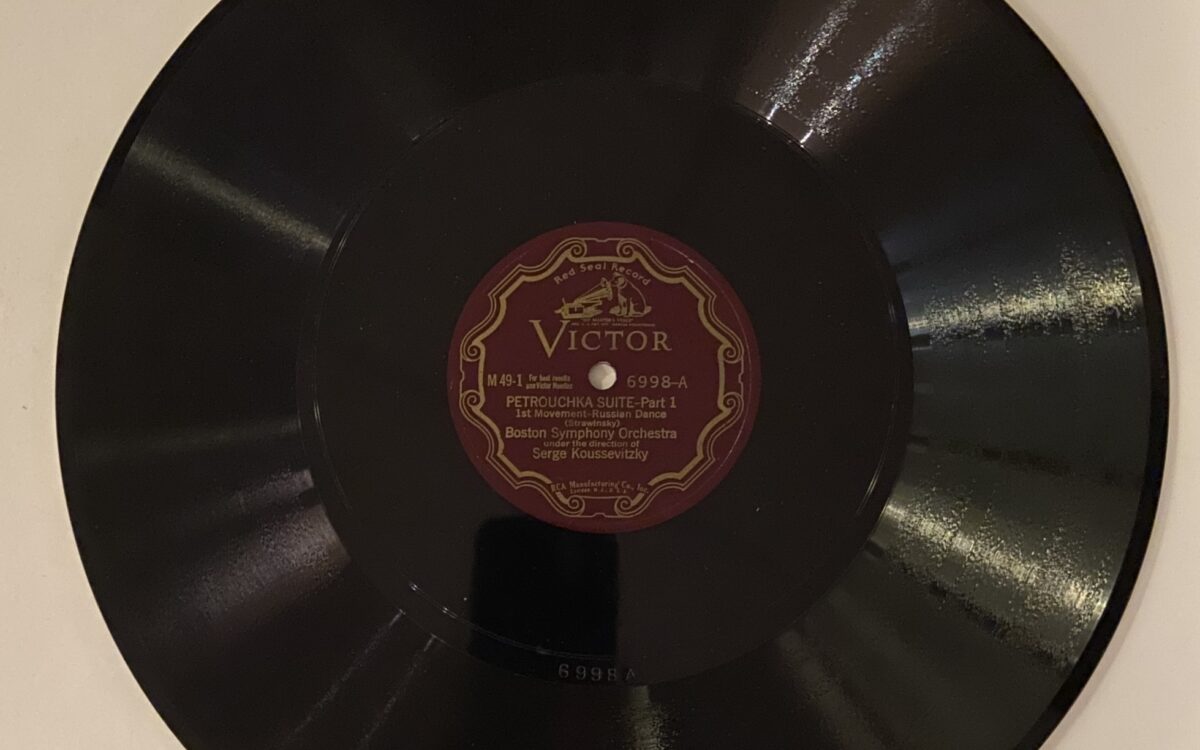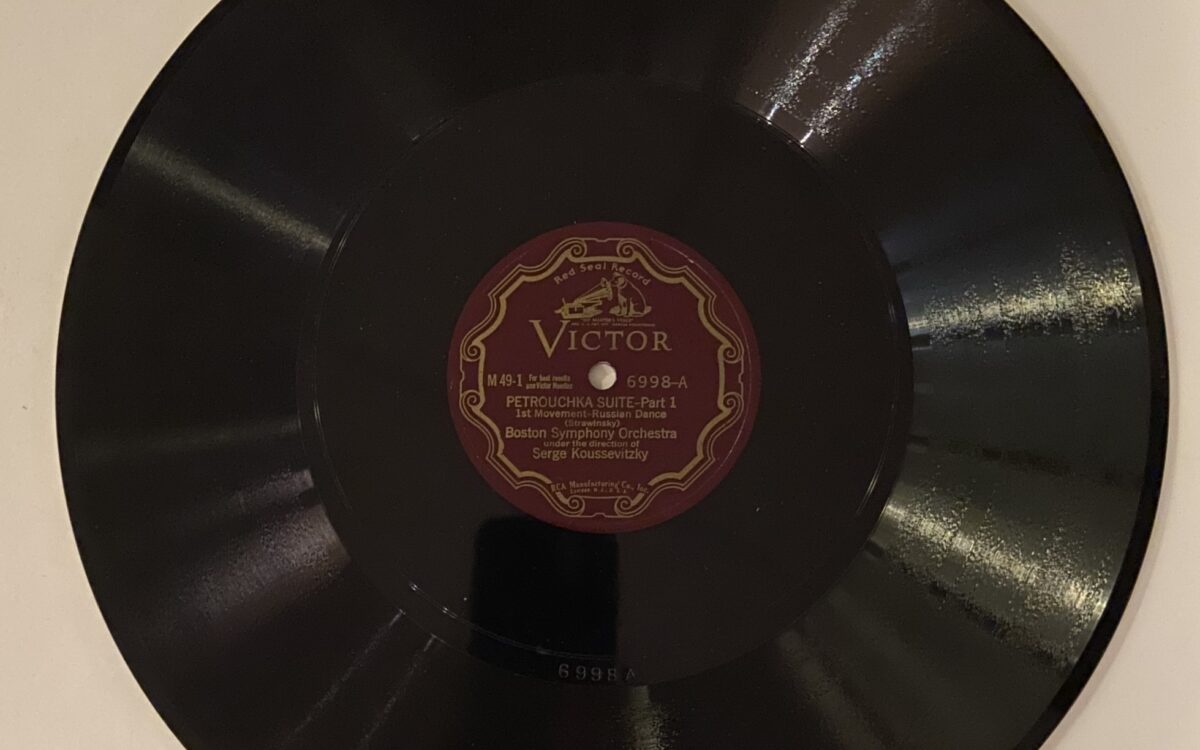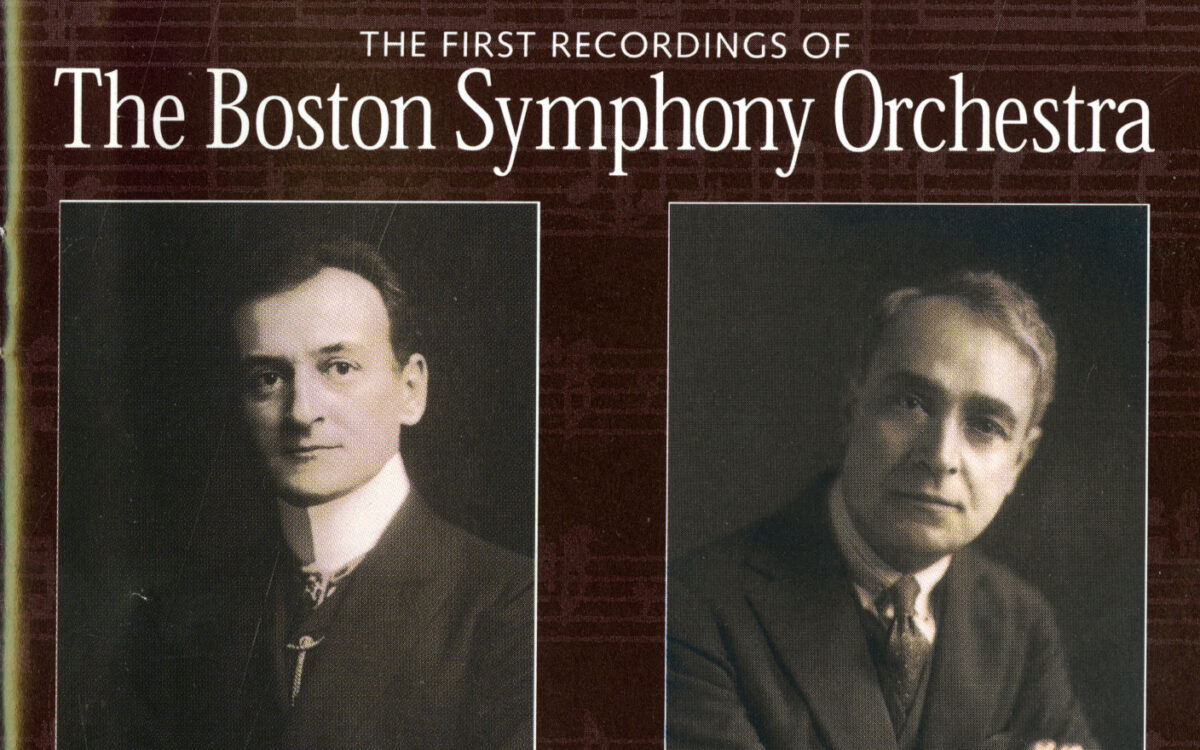Koussevitzky on Microphone: Over the Airwaves and On Record
The advent of the microphone opened up possibilities for the BSO to be heard in clear tones outside the concert hall. Microphones allowed the orchestra to be transported from Symphony Hall to listeners around New England as the BSO embarked on its inaugural broadcasts in 1926. The microphone also allowed entire orchestras to travel the world via disc: the orchestra's only previous recording (in 1917 under Karl Muck) relied on the horn method of acoustical recording which greatly limited both ensemble size and pitch range. The electrical recording method, used first by the BSO in 1928, allowed for an entire orchestra to be captured in its full breadth and sold to millions for repeated listening enjoyment.
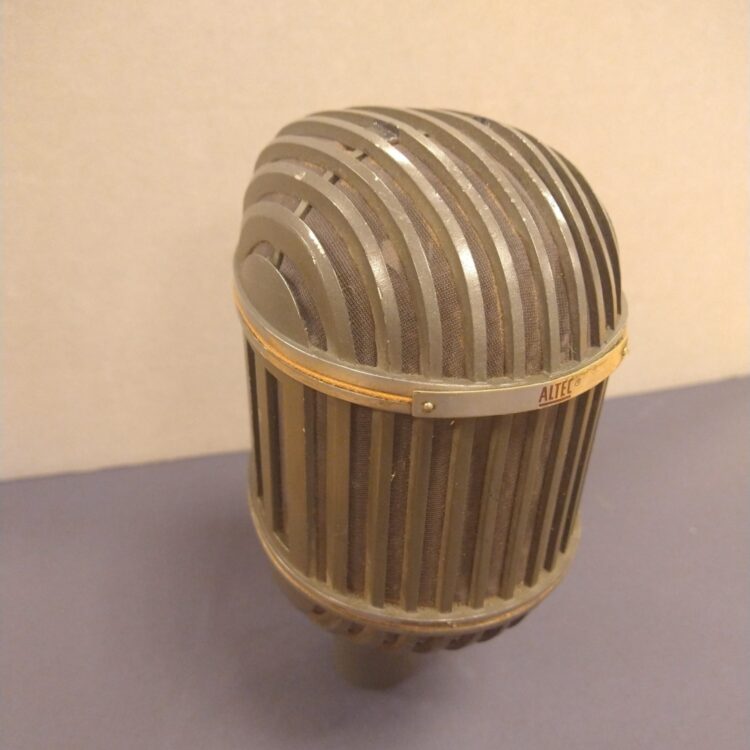
Vintage Altec 639 radio microphone
On loan from Kevin P. Mostyn
BSO Radio Broadcasts During the Koussevitzky Era (1924-1949)
-
1926-28
![Newspaper article covering the first broadcast of the BSO in January 1926]()
The BSO was heard on radio for the first time in concerts broadcast live from Symphony Hall during the second half of the 1925-1926 season, between January 23 and May 1, 1926. Broadcasts were privately funded by Winfield S. Quinby and continued through the 1927-1928 season.
-
January 23, 1926
![Newspaper article covering BSO’s first radio broadcasts from Symphony Hall in 1926 in regards to copyright]()
First time on the air
On its very first broadcast, the BSO deals with the copyright issues that come with radio. There is also great interest in the technical side of production.
-
Fall 1926
![Newspaper article covering the BSO broadcasts in the fall of 1926 including a photo of two men in a radio booth]()
The inaugural series was renewed in the fall of 1926, adding New York station WJZ to the broadcast relay.
-
October 4, 1930
A special broadcast by WEEI and the NBC network to honor the Tercentenary of Massachusetts Bay Colony, includes a BSO performance.
-
1932-38
NBC continues to broadcast concerts for portions of the 1932-1933 and 1933-1934 seasons. As of October 1935, the BSO is back on NBC with regular Saturday night concerts.
-
January 23, 1935
![Scapbook page with newspaper clipping covering RCA Victor's recording of the BSO in Symphony Hall]()
During RCA Victor’s recording session, there is an hour-long broadcast on WBZ and the NBC Network to promote the company’s BSO recordings.
-
1938
Barred from the Airwaves
The American Federation of Musicians makes it more and more difficult for the BSO, still a non-union orchestra, to be heard on the airwaves. Following the BSO’s August 4, 1938, Tanglewood Music Shed inaugural broadcast, the BSO is effectively barred from the airwaves.
-
December 26, 1942
![NBC Blue Network radio announcer James G. McDonald and Serge Koussevitzky stand at a microphone shortly after the BSO returned to the airwaves, January 1943]()
The BSO returns to the airwaves on NBC’s Blue Network, having reached an agreement with the AFM.
-
1940s
![Armed Forces Transcription Disc]()
Serge Koussevitzky conducting the Boston Symphony Orchestra on November 17, 1945
During WWII, the Armed Forces Radio Service pressed thousands of transcription discs (recordings of broadcasts) and sent them to stations in Alaska and the Panama Canal Zone, including performances by the BSO.
-
1943-1949
In October 1943, as a result of a court order to prevent an NBC monopoly, the Blue Network becomes the American Broadcasting Company (ABC), which continues to carry a one-hour portion of BSO concerts from Symphony Hall and Tanglewood through August 1948. NBC then broadcast some rehearsals and Tanglewood performances during the 1948-1949 season.
-
1951
![Composer Aaron Copland looks at Serge Koussevitzky, wearing a coat, cap, and gloves]()
Composer Aaron Copland and conductor Serge Koussevitzky at Tanglewood
Photograph by Viktor Kraft, courtesy of The Library of Congress
Click here to listen to Aaron Copland mention Serge Koussevitzky on WGBH's inaugural broadcast on October 6, 1951On October 6, 1951, WGBH made its inaugural broadcast, featuring a live BSO concert. The concert to first travel over the fledgling station's airwaves was dedicated to the memory of the late Serge Koussevitzky. During intermission, composer Aaron Copland discussed his hopes for the new station, including his conviction that Koussevitzky would have approved of WGBH's mission.
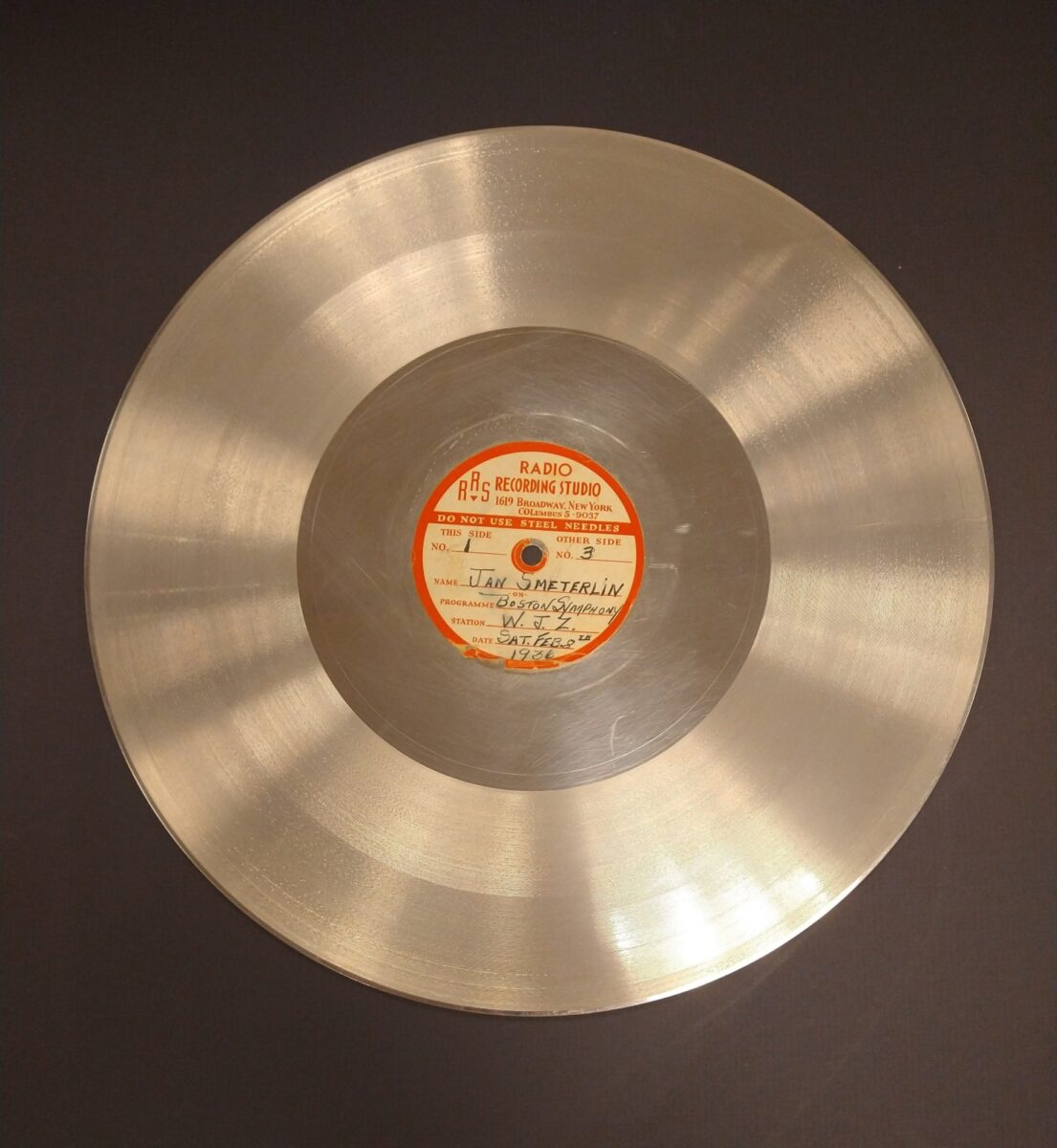
Listen: Excerpt of Serge Koussevitzky conducting the BSO and Jan Smeterlin in Chopin's Piano Concert No 2 on February 8, 1936 (transferred by Ward Marston and soon to be released on www.marstonrecords.com)
BSO Commercial Recordings during the Koussevitzky Era (1924-1949)
-
November 13, 1928
![Victor Talking Machine 78 rpm recording of Stravinsky's Petrouchka from 1928]() "Symphony's Playing Is Captured in Wax" News, Hamilton, Ontario, November 24, 1928
"Symphony's Playing Is Captured in Wax" News, Hamilton, Ontario, November 24, 1928First recording sessions in Symphony Hall for Victor Talking Machine (later RCA Victor); Koussevitzky’s first recording session with the BSO; and BSO’s first ever electrical recording; Koussevitzky chooses works by living composers for his inaugural recordings.
-
1929-30
BSO makes more recordings in Symphony Hall with the newly merged RCA Victor.
-
Early ‘30s
The economic depression nearly wipes out the record industry. RCA doesn’t renew its contract with the BSO.
-
1934
In an effort to recruit the BSO, Columbia records the BSO’s February 2, 1934 performance of Roy Harris’ Symphony No. 1 in Carnegie Hall for release. The BSO is not satisfied with the sound.
-
1935
RCA Victor and BSO sign a new contract; RCA returns to Symphony Hall with improved recording technology, ushering in a period of regular recording sessions and releases. During RCA Victor’s recording session on January 23, 1935, there is an hour-long broadcast on WBZ and the NBC Network to promote the company’s BSO recordings.
-
1940
The BSO is banned from making commercial recordings because of its status as a non-union orchestra.
-
1942
The BSO joins the American Federation of Musicians.
-
November 22, 1944
The BSO’s first RCA Victor recording session following unionization.
-
1950
![Album cover for RCA Victor's recording of Prokofiev's Peter and the Wolf, depicting a boy and cat in a tree, with a wolf chasing a bird.]()
Though no longer Music Director of the BSO, Serge Koussevitzky spends the summer at Tanglewood and records Prokofiev's Peter and the Wolf with Eleanor Roosevelt as narrator.
-
November 1950
Last recording made with the BSO before his death on June 4, 1951.
Commercial Recordings with RCA Victor
Victor Talking Machine (later RCA Victor) recording of the suite from Stravinsky’s ballet Pétrouchka (M-49), conducted by Serge Koussevitzky and recorded in Symphony Hall, November 13 and 14, 1928
Koussevitzky deliberately chose works less than 20 years old to feature on his first recording with the BSO. Other works recorded during the earliest sessions included the “Pas de Deux” from Stravinsky’s Apollon musagète and the second suite from Ravel’s Daphnis et Chloé.
Historical recordings reissued by BSO Classics: Serge Koussevitzky and the BSO, November/December 1928
The BSO’s first electrical recordings from 1928 are available today on CD through the BSO Classics label, produced by Brian Bell. Consistent with his mission to support living composers, Koussevitzky deliberately chose works less than 20 years old to feature on his first recording with the BSO.
November 1928 newspaper article covering the BSO’s first electrical recordings
The old acoustical method of recording involved a small ensemble playing into a horn that would transmit the sound as grooves in a master disc. With the advent of electrical recording, an entire orchestra could be captured via a microphone. The Victor Talking Machine Company brought their equipment to Symphony Hall in order to capitalize on the venue’s famous acoustics.
Musical Leader, Chicago, 1928
The January 27, 1935 issue of the Boston Herald reports on RCA Victor’s return to the BSO and Symphony Hall with improved recording technology
The Great Depression took a heavy toll on recording companies and RCA Victor let their contract with the BSO lapse in the early 1930s. Nearly five years after their last recording session with the BSO, RCA was back at Symphony Hall in 1935. In a novel move to promote the renewed relationship between the BSO and RCA Victor, one hour of a recording session was broadcast live on the radio, January 23, 1935.
A trio of RCA Victor Red Seal Records catalog pamphlets featuring Serge Koussevitzky
RCA Victor released its prestigious orchestral and opera works on its Red Seal label. These catalog pamphlets from November 1936, February 1941, and August 1941 all featured conductor Serge Koussevitzky, twice as “artist-of-the-month.”
Historical recordings reissued by BSO Classics: Serge Koussevitzky and the BSO, November 22, 1944
This album contains performances of Tchaikovsky, Berlioz, Debussy and Corelli from 1944, from the first time the BSO recorded with RCA Victor after joining the American Federation of Musicians union in 1942.
Recording session photograph included as album insert for the recording of Prokofiev's Peter and the Wolf, Serge Koussevitzky conducting the BSO with Eleanor Roosevelt as narrator
In a three-hour recording session at Tanglewood on August 11, 1950, Eleanor Roosevelt narrated the story of a boy who outwitted a wolf in Prokofiev’s Peter and the Wolf, with Serge Koussevitsky and the Boston Symphony Orchestra. The work was performed again as part of the Tanglewood on Parade Gala concert later that very evening. Though released on the newly popular LP format, as well as the 45 and 78 formats, the record never became popular in its day.
RCA Victor record display stand with Nipper the dog, holding a 45 Red Seal record of Peter and the Wolf








